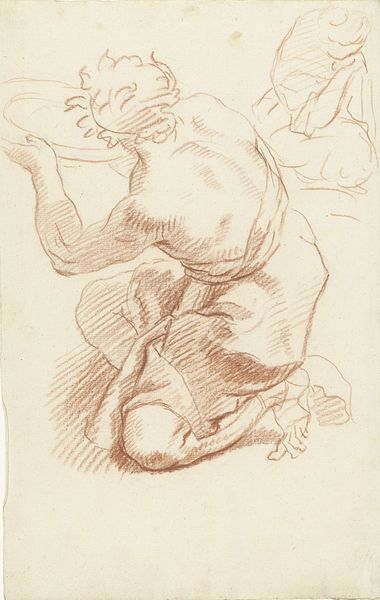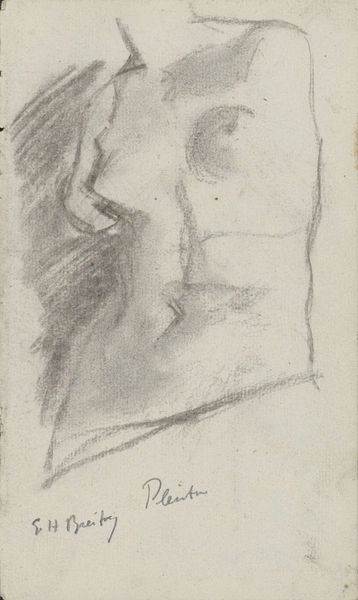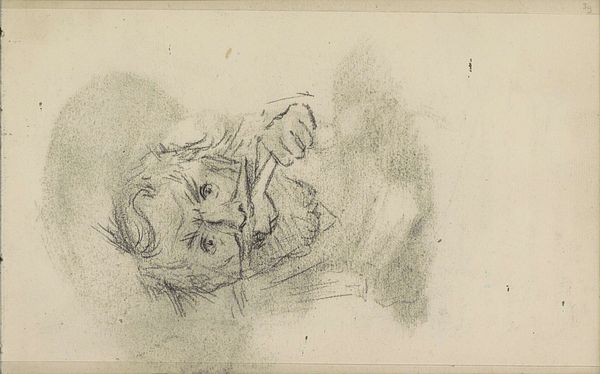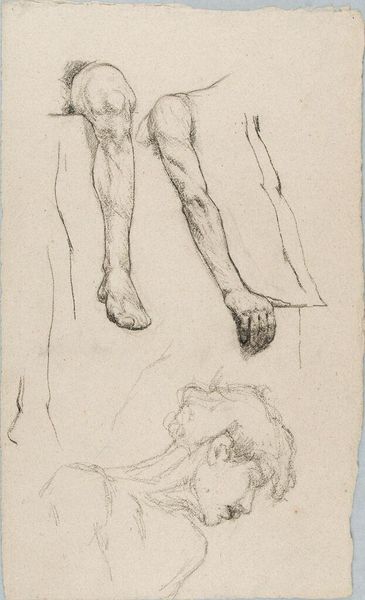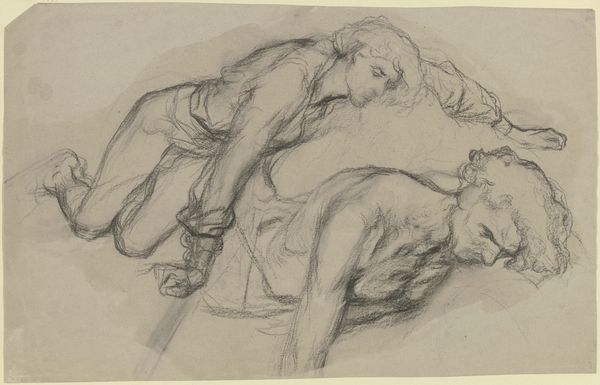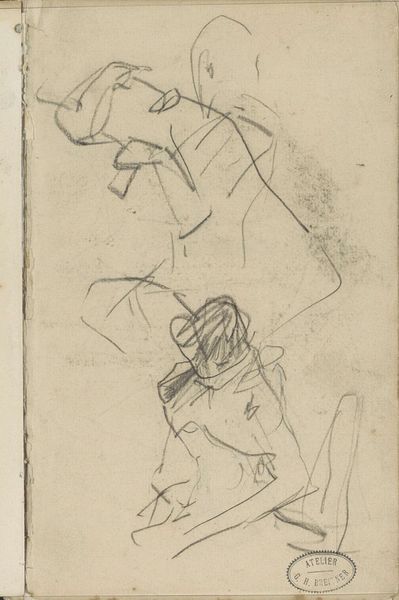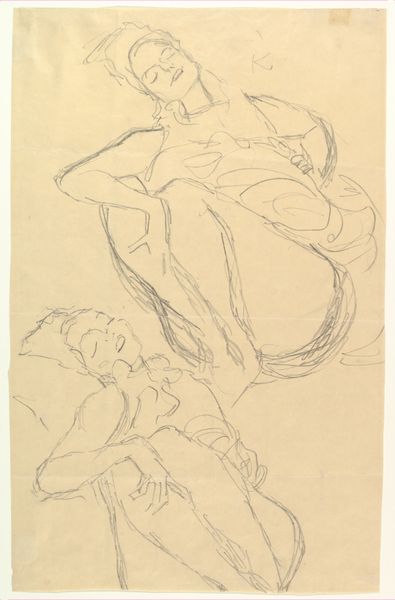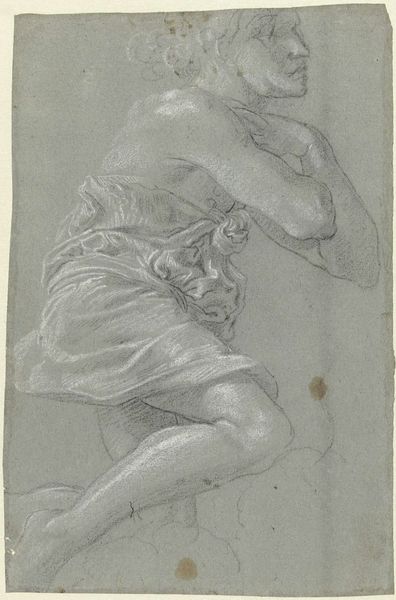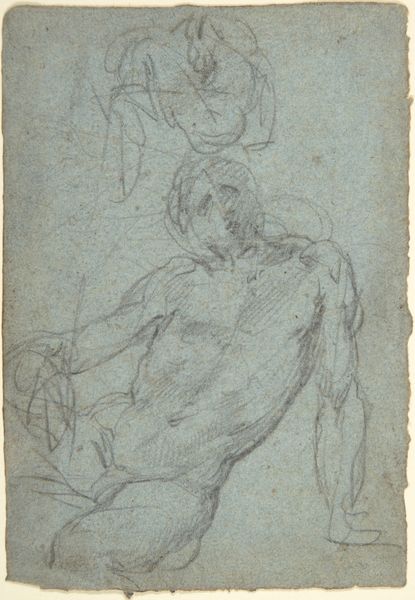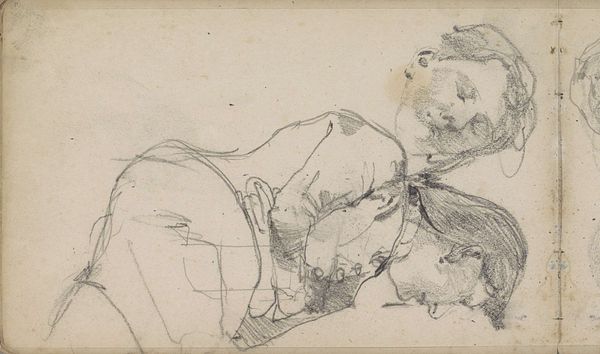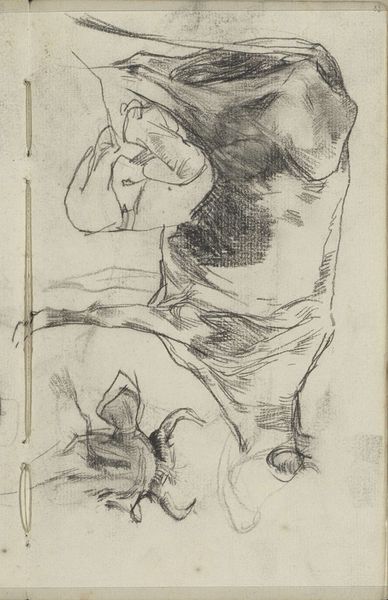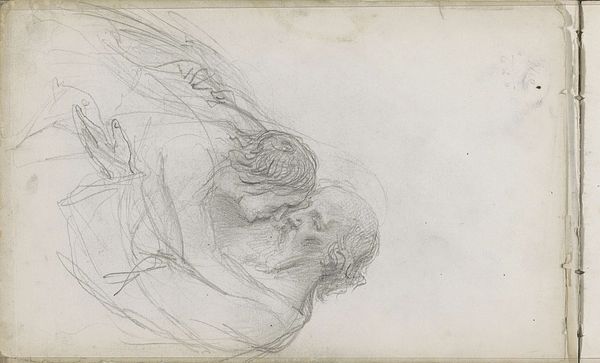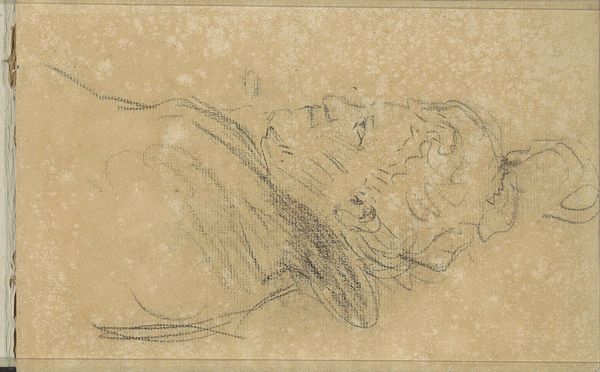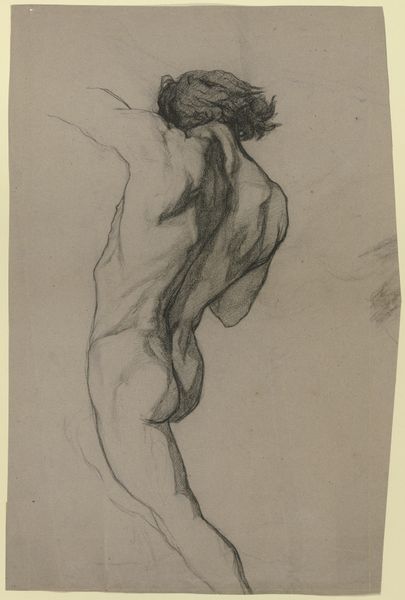
drawing, pencil
#
portrait
#
drawing
#
baroque
#
pencil sketch
#
figuration
#
pencil
#
portrait drawing
#
history-painting
#
academic-art
Dimensions: height 325 mm, width 205 mm
Copyright: Rijks Museum: Open Domain
Curator: Look at this drawing; two studies rendered with a confident hand. It’s "Twee studies van mannen tijdens zwaar werk," or "Two Studies of Men During Heavy Work," created by Dionys van Nijmegen sometime between 1715 and 1798. Editor: They appear so weighted down, almost melancholic despite their musculature. It reminds me of a Michelangelo sketch, all earthy red pencil and potent physicality. Curator: It’s compelling, isn't it? This piece showcases van Nijmegen's academic background, steeped in the Baroque tradition. You see that classical influence in the idealized forms, but here, filtered through his unique sensitivity. Consider the material, too; the pencil on paper is incredibly direct, emphasizing the artist’s hand and the immediacy of the sketch. Editor: Exactly. And think about the "heavy work." What tasks are they performing? What is the historical and social context surrounding this labor? Is this an idealized view, or is there commentary here? Was this work for architectural ornament? We've lost much context regarding their roles in society; that is, who is burdened, how and why. Curator: It's true—the historical record leaves many unanswered questions. Perhaps van Nijmegen wasn't trying to document specific labor but was, rather, studying the anatomy of exertion and pressure. Observe how he captures that tension, how the lines deepen around the neck and shoulders... it's almost as if we can feel their strain. Editor: And perhaps, it goes to the larger consumption of images and labor? These heroic physiques used in history paintings or architectural drawings as a form of valorizing their contributions... It’s something to think about: where does this drawing originate in his world and in ours? Curator: In seeing this study, perhaps it invites us to contemplate not just physical burdens but all those invisible weights we bear, the ones etched not on muscle but in memory. Editor: Indeed. How art is embedded and emerges out of the work that it silently draws upon and from; a labor of depiction for the labor it represents.
Comments
No comments
Be the first to comment and join the conversation on the ultimate creative platform.
